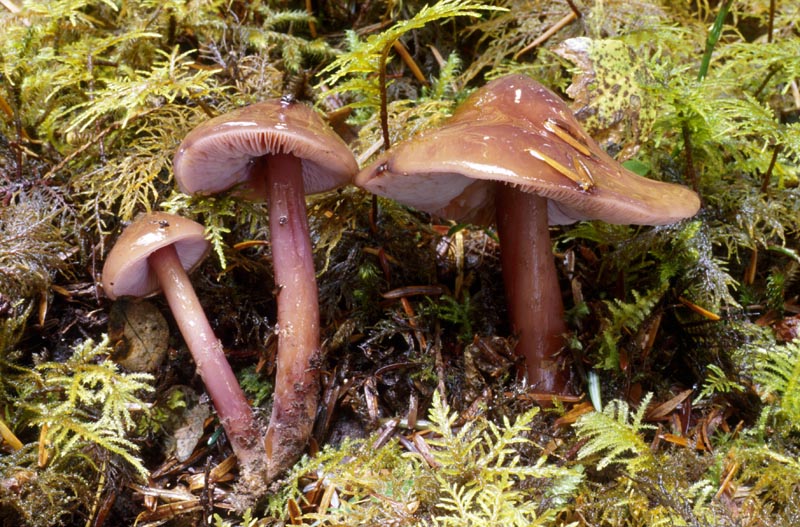Conservation Status: Not of concern
Phaeocollybia lilacifolia is generally larger than P. attenuata, but does not reach the large size attained by species such as P. ammiratii and P. kauffmanii . The young cap is dark brown and glutinous with an odor that is penetrating but hard to characterize. The gills are lilac when young, a feature shared by only a few other phaeocollybias. The stipe gradually narrows downward, but does not become hair-like as in P. attenuata; it is purplish or pale brownish and shiny when young, and becomes stuffed with cottony to fibrillose pith when mature. The spores are lemon-shaped, distinctly roughened, and about 8.5 µm long; the cheilocystidia are thin-walled and broadly club-shaped; clamp connections are absent. It is not a common species, occurring as solitary or scattered individuals in old-growth forests. P. fallax is very similar but has greenish tones in the young caps; it has been suggested that it might represent a color variant of P. lilacifolia. P. rifflipes also is very similar, but generally smaller with a floral odor and slightly smaller (about 7--7.5 µm long) spores. Other generally similar species lack the lilac gill coloration.
PNW Herbaria: Specimen records of Phaeocollybia lilacifolia in the Consortium of Pacific Northwest Herbaria database.
CalPhotos: Phaeocollybia lilacifolia photos.



